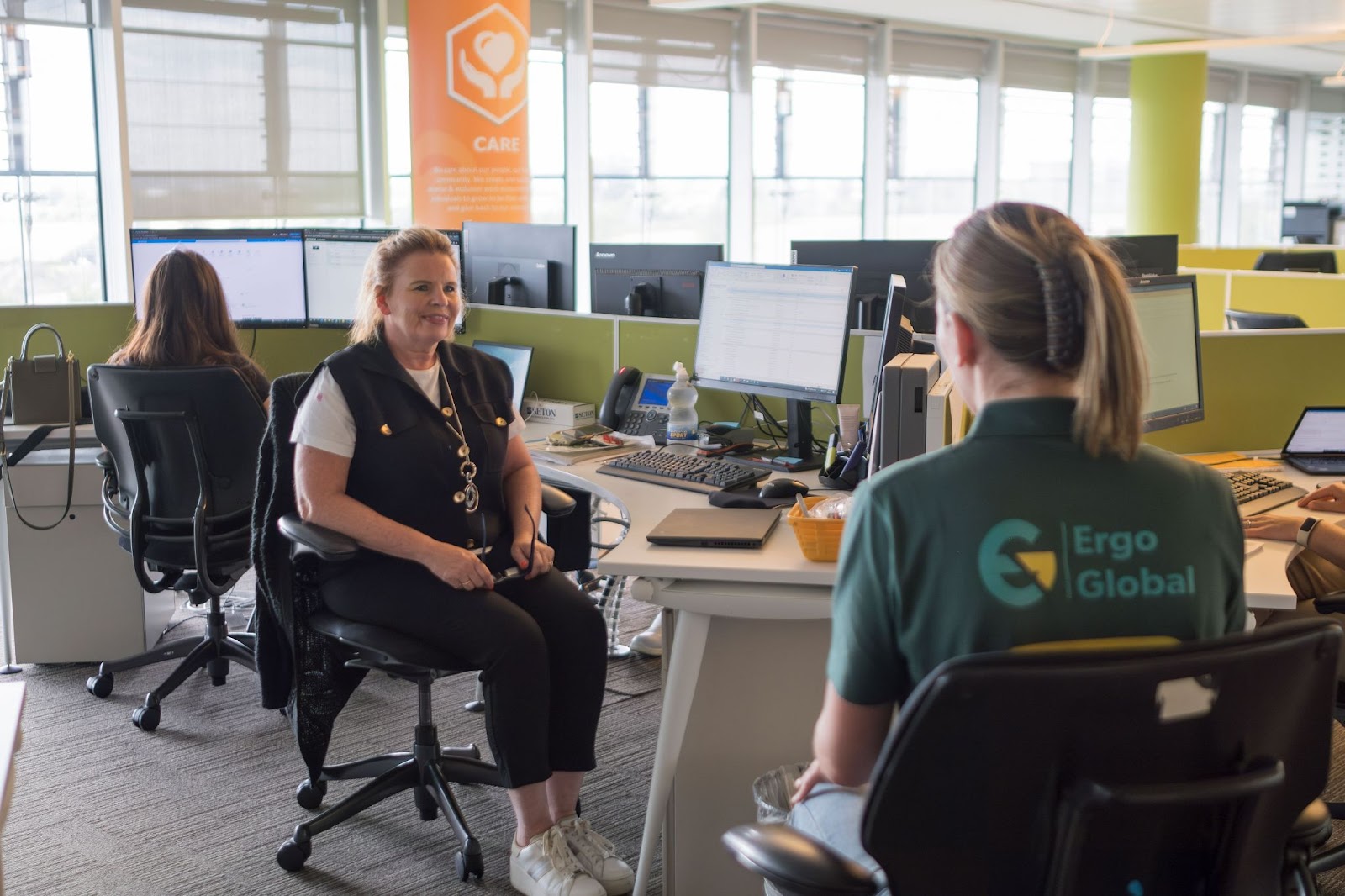Despite what you may have heard or read, not everyone needs a standing desk! A standing desk is not the answer to all the problems associated with sedentary office work. For example, a standing desk alone, is unlikely to help you lose weight.
Let us dispel the myth that standing is exercise or that it is the definite answer to your back pain.
PROS AND CONS OF STANDING AS YOU WORK
Do some people benefit from a standing desk? Absolutely. But, when it comes to health, each person and office is different. In recent times, we have seen extensive marketing and information campaigns as well as media coverage on standing desks, also known as sit-stand desks.
Some of the content is, of course, accurate. A standing desk does facilitate much needed postural changes. Sit stand desks are excellent in call centres, for example, where employees rarely get away from their desks, except during breaks.
Similarly, at non-dedicated workstations, you need easy adjustability to accommodate appropriate sitting and standing height of various employees. Again, a sit stand desk option is great here.
When designing and setting up a new office space, installing height-adjustable standing desks can work well. It is easier and perhaps cheaper in the long run – whenever there’s reorganization, the new desk user simply sets up the workspace to suit their needs.
Remember that a combination of media and marketing can be quite convincing when it comes to the need for a sit-stand desk.
WHAT YOU NEED TO KNOW ABOUT STANDING DESKS
People need movement. The main cause of many workplace discomfort concerns is poor posture and sedentary behaviour. A standing desk on its own solves neither. You might notice that excessive sitting causes tightness and discomfort in the hips and lower back for example. However, standing for long periods can also cause muscle tightness and discomfort. Many of these issues will be improved by regular movement regardless of your preferred working posture.
It is important to have the correct information when it comes to standing desks – standing is not activity! Just like sitting, standing is a static or still position. It is a good idea to use break reminder software to ensure, just as in sitting, that you do not remain standing for long periods.
If you feel like you can stand for longer, that is great. But do not feel tempted to start standing for hours at a time, this is likely to cause you some discomfort. Stand for short periods only and switch between sitting and standing frequently when using a sit-stand desk.
If you are investing in a standing desk, make sure the surface is large enough to host all workplace items. Including your screen, keyboard, mouse, phone, writing surface, etc. The use of an anti-fatigue mat is often personal preference. Rather than relying on one, tune into your body’s feedback system. Take note of any aches or strains. This is your body’s way of telling you that it is time to change posture. Do wear comfortable, supportive footwear when standing for work.
MOVE LOTS!
Hopefully, sit to stand desks have caught your attention because you are interested in your health. This is great. However, regular exercise, alternating your work tasks, and frequent movement are cheap and effective ways to also care for your health at work.
Overall, whatever type of desk you choose to use, ensure it is correctly setup for your height and sitting posture. Your desk is the correct height when your shoulders are relaxed, your elbows are by your sides and at 90-degrees while typing. This applies for sitting and standing. It is great if you are using a sit-stand. However, take the time to understand the correct ergonomic setup of this desk.
ERGONOMICS SUPPORT FOR YOUR COMPANY
Fit For Work provide a range of ergonomics services that are suitable for those working from home/remotely or those who are office-based. To learn more about office setup and good ergonomics principles, you can reach out to Fit for Work to talk about how an ergonomic programme within your office can increase productivity, increase staff satisfaction, improve staff retention and reduce sick leave.



